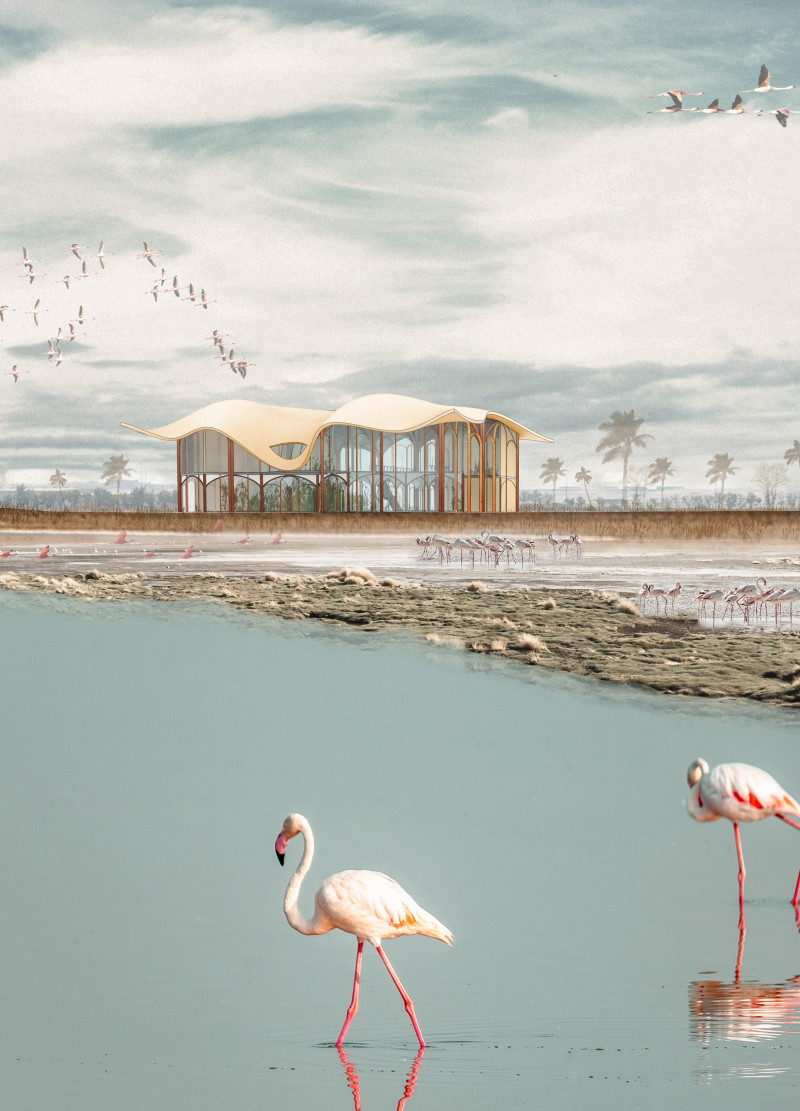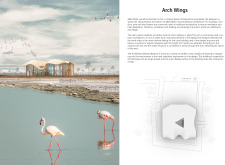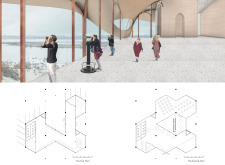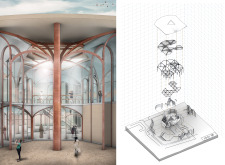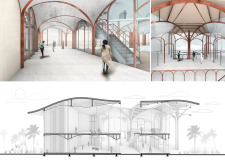5 key facts about this project
The design in Abu Dhabi addresses the challenges posed by the tropical desert climate through a thoughtful approach that blends traditional and modern elements. It functions as a multi-purpose structure with a focus on ventilation and heat control while respecting the region's cultural heritage. The overall concept aims to create a space that is both practical and deeply rooted in the architectural history of the area.
Design Elements and Traditional Context
The project features corridors, atria, and wind towers, which play an important role in promoting airflow and minimizing heat retention. These elements are common in traditional architecture and provide effective responses to the demands of the climate. By integrating them into the design, the architect achieves a balance between functionality and local aesthetic values.
Structural Integrity and Aesthetic Form
Arches are a significant component of the building, reflecting a key aspect of Islamic architecture. These arches not only contribute to the building's stability but also add to its visual appeal. The layout incorporates regular hexagonal patterns that facilitate easy movement through the space, enhancing the overall flow and organization.
Environmental Inspiration and Integration
The design draws inspiration from the Al Wathba Wetland Reserve, particularly the flamingos that inhabit the area. The main display surface is crafted to evoke the image of a flamingo with its wings outstretched, creating a dynamic form that suggests movement. This connection to local wildlife enriches the building's relationship with its surroundings.
Sustainable Design Strategies
Ventilation and shading are central to the design, highlighting a commitment to passive climate control. The arrangement of spaces is informed by the direction of prevailing winds and sunlight, which allows for a naturally cooled interior. This approach reduces reliance on mechanical systems, showing a careful consideration for environmental sustainability.
In the architectural details, the use of arches reflects the elegance of traditional forms while serving modern needs, demonstrating how thoughtful design can create a harmonious relationship with nature.


